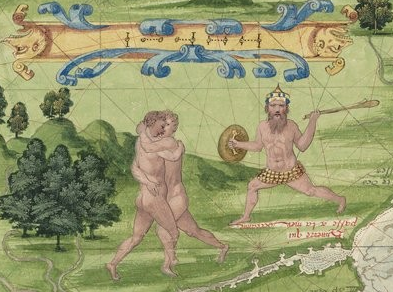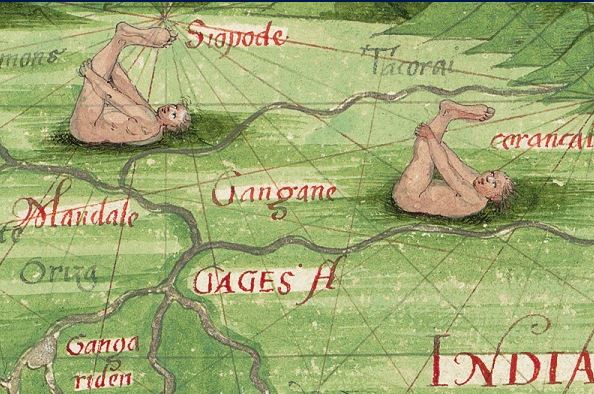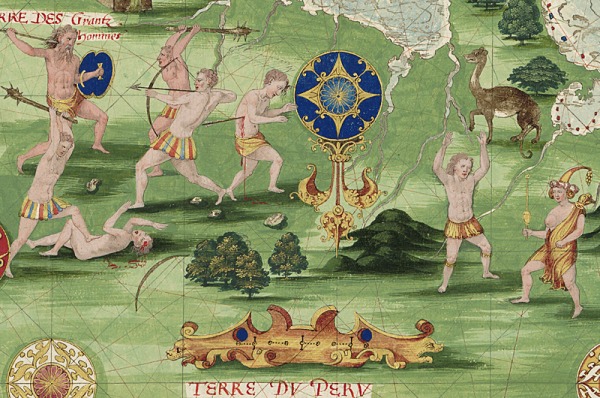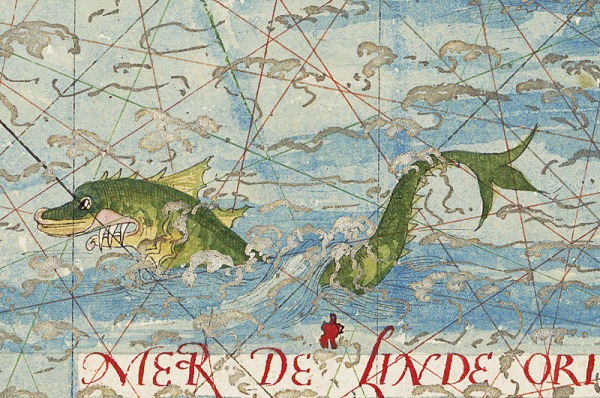Put a monster on your map

‘What’s wrong, dude?’
- The great work Cosmographie universelle
Guillaume Le Testu (or Guillaume Le Têtu) (c. 1509-12 – April 29, 1573), was a French privateer, explorer and navigator. He was one of the foremost cartographers of his time and an author of the Dieppe maps. His maps were distinguished by their sophistication and detail; they influenced generations of cartographers, navigators and explorers.

Cannibalism in Brazil

Blemmyes

Sciapods (one-legged characters who protected themselves from the sun with their feet)
Le Testu was successful as a privateer during the early years of the French Wars of Religion. In 1573, he and Sir Francis Drake attacked a Spanish mule train escorting gold and silver to Nombre de Dios on the Atlantic coast of Panama, and he was subsequently killed following his capture by the Spanish.

Giants of Patagonia
Suggestions that Le Testu may have mapped (or even visited) Australia are based on: first, his maps’ depiction of a large island (or continent), south of Java, which Le Testu identified as the Jave la Grande (“Java Major” or “Great Java”) mentioned by Marco Polo (and was otherwise known at the time as Terra Australis) and second, Le Testu’s incorporation in these maps of birds that resemble black swans and cassowaries, which are both native to Australia.
However, he did not claim to have seen Jave la Grande in person and many cartographers at the time incorporated hypothetical, mythological or fantastic elements, a practice that is clearly also true of Le Testu. His maps also showed unicorns and monstrous creatures such as 200 metre long giant snakes, basilisks, satyrs, Blemmyes (headless humans) and Cynocephalics (dog-headed humans).

Triumphal chariot driven by Poseidon

Nessie
Le Testu’s work was used by Admiral Gaspard de Coligny and French Huguenots hoping to establish themselves in Brazil, Florida, the Caribbean and even the Terra Australis derived from Le Testu’s “Jave la Grande”. However, these attempts were abandoned following Coligny’s assassination in 1572 and Le Testu’s death the following year.

Hunting and battle scenes in Mauritania

Sea monster
Source: Bibliothèque Nationale de France
![Cosmographie_universelle_selon_les_navigateurs_[...]Le_Testu_btv1b8447838j_92.jpeg](https://mappingworld.files.wordpress.com/2020/01/cosmographie_universelle_selon_les_navigateurs_...le_testu_btv1b8447838j_92.jpeg?w=620)